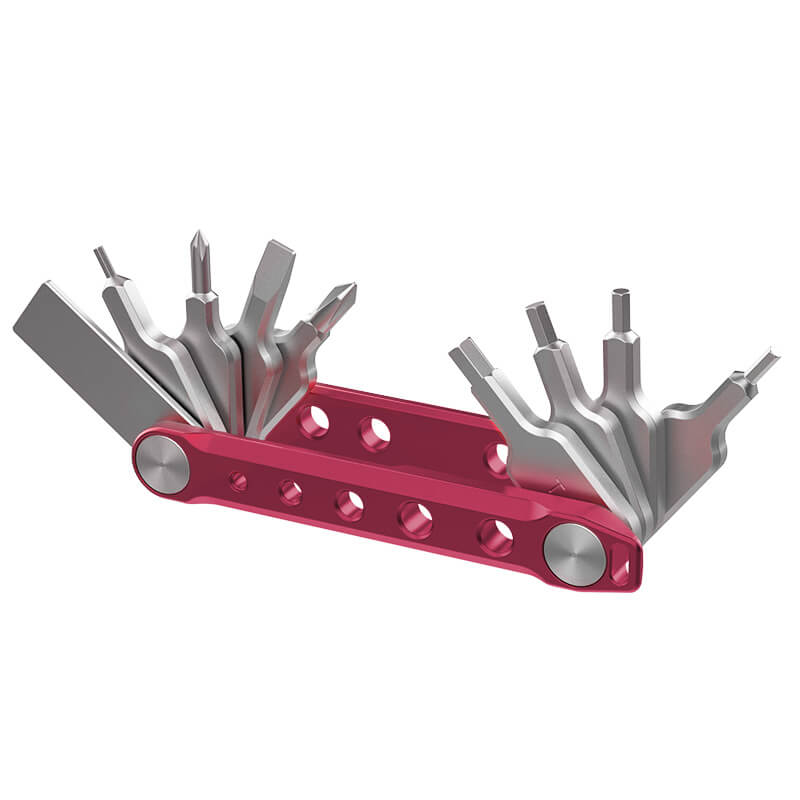Quick Answer
For a good tripod height, try this: if you're about as tall as 6 feet, get a tripod that goes up to around your chin or nose when it's fully opened up. That way, you won't have to bend down to see through the camera. This usually means a tripod that's about 60 inches tall without adding any extra height with a center column. Just remember to knock off a few inches (like 8 inches) from your eye level to make room for how tall your camera is when it's sitting on top of the tripod.

Why Does Tripod Height Matter?
When picking out a tripod, understanding how high or low it can go is key. Here's what you need to know:
- Maximum Height: This is how tall the tripod stands when you've pulled all the legs out as far as they go.
- Minimum Height: This is how short the tripod is when the legs are made as small as possible.
Tripods with adjustable legs let you change their height. Some also have a centerpiece that moves up and down for even more height options. Adjusting the height is handy, but it's crucial for your tripod to stay put without wobbling, no matter how high or low you set it.
The reason why height matters so much is that different situations need different tripod heights. For example:
- Landscape Photography: You might want a taller tripod to see over bushes or fences.
- Macro Photography: When taking pictures of tiny things close-up, a lower tripod works better.
- Uneven Ground: If you're setting up on a hillside or rocky area, the ability to adjust each leg to a different length helps keep your camera level.
Every person using a tripod will have their own ideal height based on what they're capturing and where they are. Some may need a tripod that reaches quite high, while others might be more concerned with how low it can get.

What Height Should Your Tripod Be for Comfort and Quality?
The height you set your tripod at should be comfortable for you and work well for what you're taking pictures or videos of. Here's how to figure that out:
Match Your Eye Level:
- Adjust the tripod so that your camera is at the same height as your eyes. This way, you won't have to bend down or stand on your tiptoes to see through the viewfinder or screen.
Think About What You're Shooting:
- For portraits, a tripod that's about eye level with your subject is good.
- With landscapes, a taller setup might help you get a better view of things like tall grass or fences.
Consider the Place:
- Indoors, you might haveless room, so a shorter tripod could fit better.
- Outdoors on uneven ground, a tripod with legs that can move independently helps keep your camera steady.
The main thing is to make sure you can shoot comfortably for a long time without straining your back or neck. And you want to be sure that your photos or videos come out sharp, without any wobble from a shaky tripod.

What Are the Recommended Tripod Heights for Different Photography Styles?
Choosing the right tripod height is essential for capturing the perfect shot, as it varies with different photography styles. Let's take a closer look at some recommended tripod heights tailored to various genres:
Landscape Photography:
- Tall Tripods: To shoot vast landscapes effectively, aim for a tripod that reaches at least your eye level when fully extended-usually around 50-70 inches (127-178 cm) without the center column raised, depending on your height.
- Stability Matters: Opt for a sturdy tripod that can handle windy conditions, even if it means sacrificing some height.
Portrait Photography:
- Eye-Level Heights: Set your tripod so that the camera is at your subject's eye level, which might range from about 60 inches (152 cm) for a seated portrait to around 65-70 inches (165-178 cm) for a standing adult.
- Versatile Height Range: A tripod that adjusts from about 20 inches (50 cm) to above eye level gives you flexibility for varying model heights and angles.
Macro and Product Photography:
- Close to the Ground: For close-up work, you may need a tripod that goes down to 10-15 inches (25-38 cm) or even lower for extreme close-ups.
- Reversible Center Columns: Look for tripods that allow you to invert the center column, facilitating shots mere inches above the ground.

Street and Travel Photography:
- Compact and Moderate Height: A travel-friendly tripod should collapse to around 15-25 inches (38-63.5 cm) for mobility but extend to at least 55-60 inches (140-152 cm) for practical use in various locations.
- Balance of Weight and Strength: Ensure the tripod is lightweight yet robust enough to support your gear, ideally under 4 pounds (1.8 kg) while providing stability.
Sports and Action Photography:
- Quickly Adjustable Heights: Sports photography often requires a height range from about 30 inches (76 cm) for low-angle shots to around 65 inches (165 cm) for eye-level perspectives.
- Monopod Option: Consider a monopod that extends from around 20 inches (50 cm) to over 65 inches (165 cm) for fast-paced movement and varied shooting heights.
Studio Photography:
- Customizable Setups: Studio situations vary greatly, but tripods should generally range from about 25 inches (63.5 cm) for product photography to over 72 inches (183 cm) for fashion shoots.
- Sturdy Construction: In studios, heavier tripods are acceptable-look for one that can safely bear all your equipment, from cameras to heavier lighting gear.
The key is finding a tripod that offers the flexibility to cover these diverse scenarios while being sturdy and reliable. And remember, maintaining your tripod by regularly cleaning and tightening its parts will ensure its longevity and performance in your photographic endeavors.
How to Find Your Ideal Tripod Height
Tailoring to Your Height:
A tripod should match your height so you can stand comfortably. If you're tall, look for a tripod that reaches up without you having to bend over. If you're shorter, make sure the tripod isn't too tall for you when it's set at its lowest height.
Adjusting to Your Subject:
- Portraits: When photographing people, keep the camera at eye level with your subject. This way, your photos will look natural. A tripod that's too high or too low might make your subjects look distorted or unnatural.
- Landscapes: For wide scenes like mountains or fields, having a bit of height can help. It lets you see over things that might be in the way and capture more of the scene in your photo.
- Close-up Work: If you're snapping pictures of small details or objects on the ground, a tripod that gets really low is handy. You won't have to crouch awkwardly to get your shot.
Adapting to Your Environment:
- Indoor Constraints: Inside, where space is limited, use a tripod that doesn't take up too much room. It should let you move around easily and set your camera to the height you need without bumping into furniture or walls.
- Outdoor Terrain: Outdoors, the ground isn't always flat. Look for tripods with legs that adjust independently. This lets you keep your camera steady and straight even when the ground isn't.
Ensuring Stability at Any Height:
- The most important thing about a tripod is that it keeps your camera still. Even when the tripod is tall, it should not wobble. A shaky tripod could ruin your photos or videos.
- Some tripods come with a hook where you can hang your camera bag or weights. This extra weight can keep the tripod from tipping over, especially when it's set up higher.
- Strong materials like carbon fiber are lightweight and sturdy, so they're good for both easy carrying and keeping your camera steady at any height.
Choosing the right tripod means considering your personal ergonomics, the subject of your images, and the environments where you'll be shooting. It also requires balancing these factors with the need for a stable platform for your camera.

Final Thoughts
Picking the right tripod is all about comfort and stability. You want one that's tall enough so you're not bending over but still keeps your camera steady for that crystal-clear shot. Whether you're shooting a portrait or a sweeping landscape, the perfect tripod adjusts to the right height easily and stays rock-solid, no matter where you are. So choose a tripod that feels good to use and helps you take great photos without any hassle.
FAQs on Tripod Heights
Q1: How do I know if a tripod will fit in my travel bag or luggage?
Look for the collapsed height specification when purchasing a tripod. Compare this to the dimensions of your bag or luggage to ensure a good fit. Travel tripods are designed to be compact and portable.
Q2: Are there tripods that can switch between being tall and short quickly?
Yes, some tripods have rapid adjustment systems that allow for quick transitions between heights. Look for models with features like quick-release leg locks for fast setup changes.
Q3: Can adding accessories to my tripod affect its recommended height?
Yes, accessories such as sliders, dollies, or additional heads can change the center of gravity and effective height of your setup. Always consider how accessories might alter the dynamics of your tripod.
Q4: What should I do if I'm shooting on a slope and my tripod isn't tall enough?
When shooting on uneven terrain, find a tripod with independently adjustable legs. This feature allows each leg to be set at different lengths to maintain a level head and camera.
Q5: Do tabletop tripods offer the same stability as full-size tripods?
Tabletop tripods are stable within their limits but don't provide the height or support for heavier equipment that full-size tripods do. They're best suited for lightweight cameras and situations where portability is crucial.
Q6: How do I protect my tripod from getting damaged when extending it to maximum height frequently?
Always extend and retract the legs gently to avoid wear and tear. Regularly cleaning the segments and applying lubricant if recommended by the manufacturer can also help maintain the mechanism's longevity.
Q7: If my tripod's max height isn't enough, can I safely use extenders?
Extenders can increase the height but may compromise stability. Only use extenders designed for your specific tripod model and follow the manufacturer's guidelines to ensure safe operation.






